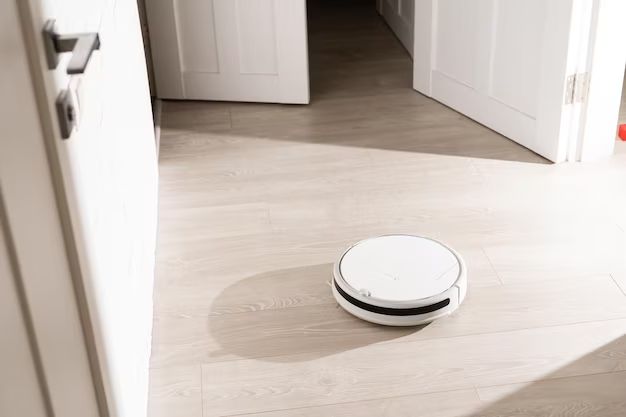Laminate flooring is a popular flooring option for many homes. It is durable, affordable, and easy to maintain. However, there is some debate around whether vacuuming laminate floors is a good idea or not. Here is a look at the pros and cons of vacuuming laminate floors to help you decide if it is OK for your home.
Page Contents
The benefits of vacuuming laminate floors
There are some benefits to vacuuming laminate floors regularly:
- Removes dust, dirt, and debris – Vacuuming can help get rid of surface-level dust, dirt, sand, and debris that can build up on laminate flooring.
- Prevents scratching – Letting debris sit on the floor can potentially scratch the surface when walked on. Vacuuming helps avoid this.
- Allergens and dander – Vacuuming can help remove pet dander, pollen, and other allergens from laminate floors to promote better indoor air quality.
- Appearance – Regular vacuuming keeps laminate floors looking cleaner and more attractive.
If you have pets, young children, or simply want your floors to appear as clean as possible, routine vacuuming can help achieve this.
Potential risks of vacuuming laminate floors
While vacuuming laminate floors has some benefits, there are also some potential downsides:
- Scratches – Depending on the vacuum brush type, vacuuming could potentially scratch the surface of laminate flooring over time.
- Dislodging planks – An aggressive vacuuming approach may inadvertently loosen or dislodge laminate flooring planks.
- Dust storms – Vigorously vacuuming debris on laminate can kick up lots of dust in the process.
- Noise – Vacuuming across laminate flooring can be quite noisy compared to carpeting.
To avoid these issues, careful vacuuming technique is required to safely clean laminate floors.
Best practices for vacuuming laminate floors
If you want to vacuum laminate flooring, here are some tips to do it safely and effectively:
- Use a soft brush or bare floor attachment – Don’t use beater bar brushes which can scratch the laminate surface over time. Attachments designed for hard floors are ideal.
- Disable the beater bar – If possible, turn off the spinning beater bar function so it doesn’t contact the floor.
- Set to low suction – High suction power risks dislodging planks. Use lower suction settings.
- Go with the floorboard grain – Vacuum in the direction of the floorboards to avoid catching edges.
- No excessive pressure – Let the vacuum do the work without applying extra downward force.
- Check condition – Inspect the vacuum brush/attachment for signs of damage or roughness that could scratch floors.
- Sweep first – Sweep floors with a broom or dust mop before vacuuming for best debris pickup.
Following these tips while vacuuming can minimize the chance of damage to your laminate flooring.
Vacuuming vs. dry mopping laminate floors
In addition to vacuuming, many people opt to dry mop laminate floors as well. Here is a comparison of the two methods:
| Vacuuming | Dry Mopping |
|---|---|
| More effective at dirt/debris pickup from seams and edges. | Better for quick touch-ups and cleaning spills/messes. |
| Requires power outlet and vacuum machine. | Manual method only requires a mop. |
| Some noise level while operating. | Very quiet cleaning process. |
| Bristles/suction could damage floor if not cautious. | Microfiber mop pads very gentle on floors. |
In general, vacuuming is ideal for routine deep cleaning while dry mopping works nicely for quick spot cleaning and everyday maintenance between deeper cleanings. Some people alternate between the two methods for the best floor care approach.
Best vacuum cleaners for laminate
If you decide to vacuum laminate flooring, use a vacuum designed for hard floors. Here are some top options:
- Features a hard floor attachment and brushroll shutoff.
- Lift-away canister for portable cleaning.
- HEPA and anti-allergen complete seal technology.
- Large dust cup capacity.
2. Dyson Ball Animal 2
- Includes a hard floor tool with carbon fiber filaments.
- Self-adjusts suction power as needed.
- Ball steering for excellent control.
- Washable filters help capture allergens.
3. Bissell PowerEdge Pet Hard Floor Corded Vacuum 81L2A
- V-shaped head targets dirt in hard to reach areas.
- Swivel steering and compact design.
- Easy-empty dirt cup.
- Low profile gets under furniture.
No matter which brand you choose, look for adjustable suction, bare floor settings, and brushrolls that can be disabled as key laminate-friendly features.
Tips for cleaning laminate floors
In addition to vacuuming, here are some other tips for safely cleaning and caring for laminate flooring:
- Sweep or dry mop frequently to prevent dirt buildup.
- Use floor mats at entrances to minimize tracked in debris.
- Clean spills right away to avoid moisture damage.
- Avoid excessive water and harsh cleaners which can seep into seams.
- Consider periodic steam mopping for a deeper clean.
- Reattach any loose planks promptly with adhesive.
- Add floor protectors to furniture legs prevent scratches.
- Maintain indoor humidity between 35-55% to minimize plank warping.
With regular care and by vacuuming gently, laminate floors can stay looking great for years.
Conclusion
Vacuuming laminate floors does have some benefits in terms of removing surface debris and allergens. However, care must be taken to avoid scratching or damaging the flooring surface over time. Using proper settings and attachments is key along with sweeping prior to vacuuming. For quick daily cleaning, dry mopping is a very gentle and effective option. With some caution and the right techniques, vacuuming can be included as part of a regular floor care routine to keep laminate floors looking their best.
